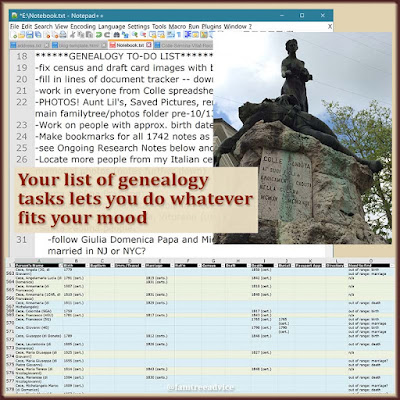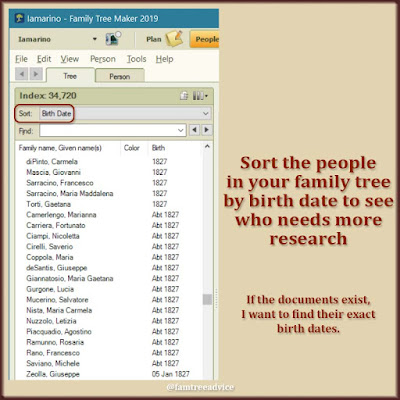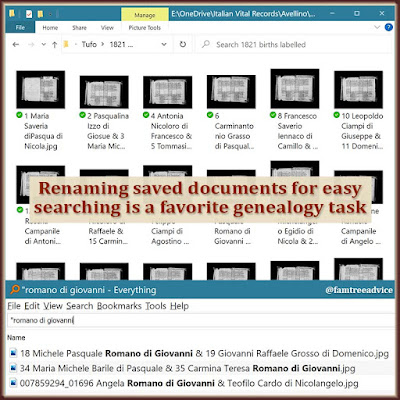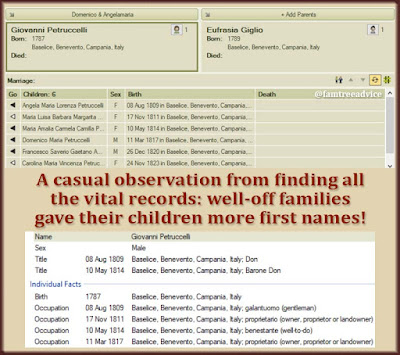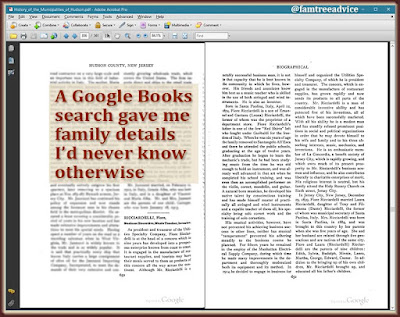DNA match Maria and I are 6th cousins twice removed. I've done the research work, as has she. My 7th great grandparents Domenico and Filippa are her 5th great grandparents. Our relationship is through my paternal grandfather's branch. According to Blaine Bettinger's Shared cM Project, she and I should share 0–45 cMs because we're so distant. But we don't. We share 79 cMs (centiMorgans). That's enough for us to be solid 3rd cousins.
A chart on the ISOGG Wiki says there's an 11% chance that 6th cousins testing with AncestryDNA® will share any DNA. And this is my 6th cousin twice removed!
Exclude Smaller Amounts of DNA
So why do some DNA matches appear to be much closer cousins than they are? The answer in this case is endogamy. Endogamy is a long history of marrying within a closed community. And it ran rampant among my ancestors. My roots run deep in a handful of neighboring hills towns in the Campania region of Italy. Populations stayed put for centuries. Everyone married someone from town or someone from the next town.
 |
| Keep in mind your 3rd–4th cousin DNA matches may be more distant than they appear. |
All that swimming in the same gene pool makes for some complex relationships. But what if DNA match Maria and I have another, more distant relationship? If we do, then our shared 79 cMs may be the sum total of smaller, unrelated amounts. We may be getting up to 45 cMs from Domenico and Filippa and 34 more cMs from other shared ancestors.
If your DNA testing service has a chromosome browser (FamilyTreeDNA or 23andMe®), use it to focus on the longer stretches of DNA you share with a match. If you exclude the very short spans, you're left with a more realistic amount of meaningful shared DNA. That smaller number may point to your true relationship.
Find Another DNA Source
For reasons I can't understand, AncestryDNA doesn't offer a chromosome browser. That means I can't focus on only the long stretches of DNA Maria and I share. Luckily, I've found our main relationship. To account for the extra DNA, I need to expand the common branches of our family trees. I need to look for other relationships.
I found a possibility, but it requires one logical assumption. Maria's great grandfather Giuseppe Basilone was born in about 1852. There are only two Giuseppe Basilones born in the town at that time. (Find out how I know there are only two.) There are no available marriage or death records to prove my theory. But there is logic.
I took the bold step of merging two people in my family tree:
- 1852 Giuseppe Basilone of unknown ancestry, and
- 1851 Giuseppe Onofrio Basilone, who happens to be my 2nd cousin 4 times removed.
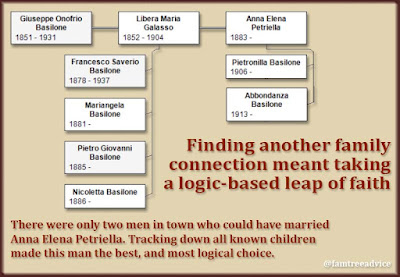 |
| When documents are not available, thorough research around your person can help. |
Why was I comfortable doing this? Because:
- Giuseppe Onofrio was 32 years older than his wife when he married in 1904. (I have the 1904 date from his wife's birth record.)
- The Giuseppe I'm trying to connect to had 4 children from 1878–1886, and then they stopped coming.
- It's logical that Giuseppe's first wife died after 1886, and he remarried a much younger woman.
- The only other possible match is a Giuseppantonio (not Giuseppe) Basilone. He's a dead end. There's no annotation about his marriage, and there are no birth records for his children.
Still, this is a theory, so I wrote a detailed note about it in my family tree. If I'm correct, DNA match Maria is now also my 5th cousin once removed. This relationship is through my paternal grandmother. My 5th great grandparents Paolo and Giuseppa are her 4th great grandparents. We just got closer! That relationship is good for about 21 cMs, or a range of 0–80 cMs. This extra relationship would explain why Maria and I share 79 cMs but are distant cousins.
 |
| Two distant relationships added together can seem like a much closer cousin. |
Don't Get Hung Up on Estimates
What does this mean to you when you're checking out your DNA matches? Once you get past 2nd or 3rd cousins, every other match may be more distant than they appear. This is especially true if you come from an endogamous population like me. Other well-known endogamous populations are:
- Acadians
- Amish
- Arabs
- Ashkenazi Jews
- French Canadians
- Mennonites
- Newfoundlanders
- Polynesians
Think of the early settlers of Colonial America. Their community was pretty small, so how many marital choices did one have? This was the case with all my semi-isolated Italian towns.
Don't fret about the estimated cousin relationship if the facts don't support it. Instead, look for other, hidden relationships.
